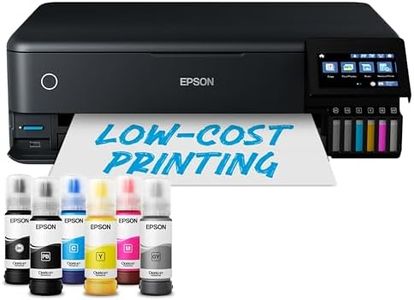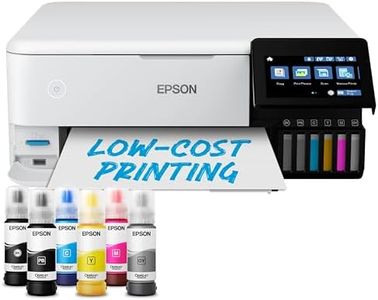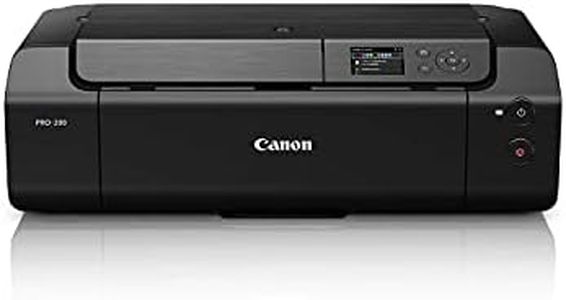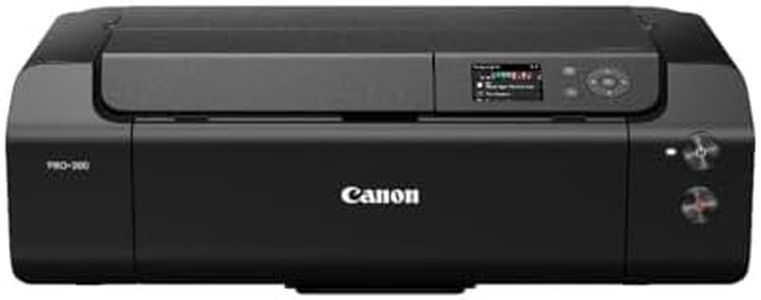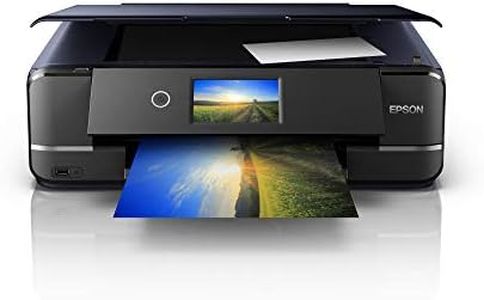We Use CookiesWe use cookies to enhance the security, performance,
functionality and for analytical and promotional activities. By continuing to browse this site you
are agreeing to our privacy policy
10 Best Pro Photo Printer
From leading brands and best sellers available on the web.Buying Guide for the Best Pro Photo Printer
Choosing a professional photo printer is an exciting step if you want to bring your photographic work to life with gallery-quality prints. It's important to consider how you plan to use the printer: are you a photographer selling prints, a studio creating client artwork, or an enthusiast seeking the best possible image output at home? Understanding your needs will help guide you through the various specifications and features, so you can select a printer that matches the quality and flexibility you require.Print Resolution (DPI)Print resolution, measured in dots per inch (DPI), tells you how finely a printer can reproduce details in your images. A higher DPI means finer detail and smoother gradients, which is essential for professional photography where every nuance matters. Most pro-grade photo printers start at about 2400 x 1200 DPI and can go up to 4800 x 2400 DPI or higher. If you're printing large images or work that will be viewed up close, choose a higher DPI for sharpness. If your prints are mostly for display at a distance, a mid-range DPI is usually sufficient.
Ink System (Number of Cartridges/Colors)The ink system describes how many separate color cartridges a printer uses. Professional photo printers often feature 6 to 12 (or more) individual inks, compared to basic printers that may use only 4. More inks allow for a wider color gamut (range of colors), smoother gradients, and more accurate reproduction of subtle tones and blacks. Photographers who want the most lifelike colors and flexibility, especially in black & white or fine art printing, should look for printers with expanded color sets. If you're mainly producing standard color photos, a printer with 6-8 colors may suffice. For gallery-quality or archival prints, opting for higher ink counts (10-12 or more) will deliver the best results.
Media Handling (Paper Size & Types)Media handling refers to the sizes and types of paper and other materials that a printer can accept. Some professional printers are limited to standard sizes like A4 or letter, while others can handle large formats up to A2, 13x19 inches, or even banners. Additionally, the printer's ability to support thick fine art papers, glossy, matte, or canvas is crucial if you want to experiment with your presentation. Consider the typical sizes and textures you plan to print your work on—if you're making large, framable art, choose a printer with wide-format capabilities and flexible media options.
Print Longevity (Archival Quality)Print longevity refers to how long prints will last without noticeable fading or color shift, which is important if you're selling art or making keepsakes. Archival quality prints often use pigment-based inks, which are more resistant to light and environmental wear than dye-based inks. For professional use, favor printers with certified archival inks and papers, which can ensure prints last decades or even over a century under proper conditions. If longevity is less critical for your use, dye-based systems might offer more vibrant colors but with less staying power.
Connectivity OptionsConnectivity refers to how you send print jobs to your printer. Professional photo printers typically support USB connections, but may also offer Ethernet, Wi-Fi, and sometimes support for cloud or mobile printing. Think about your workflow—if you print from multiple computers, a network-capable printer is more convenient. For simpler or single-user setups, USB is reliable and straightforward.
Print SpeedPrint speed tells you how quickly a printer can produce an image. Professional photo printers tend to be slower than standard printers because they prioritize quality. Print speeds are often measured in pages per minute (PPM) or the time taken for a single high-quality print. If you need to produce many prints quickly, look for a model that balances speed with quality. If ultimate quality is your focus and you're not in a hurry, a slower but more precise printer will suit your needs.

